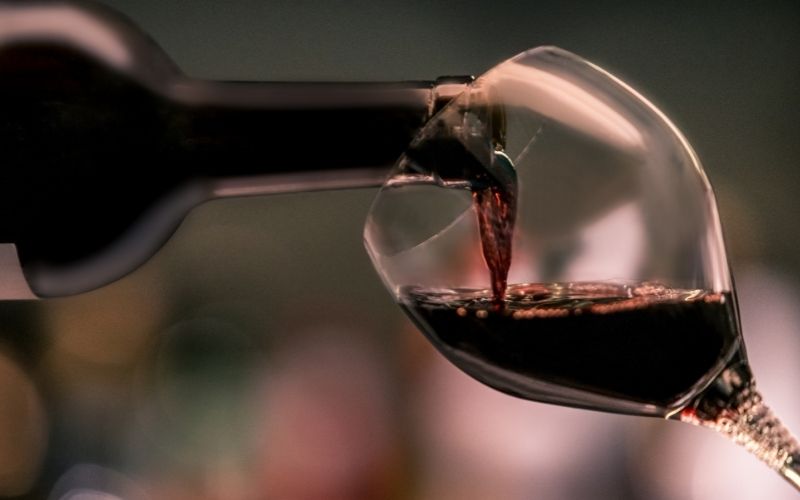
Everything You Need To Know About The Art Of Decanting Wine


If you're a wine lover, you've probably heard of the term "decanting." But what is decanting, exactly? And what are the benefits of decanting wine? This blog post will discuss everything you need to know about this art form.
We'll talk about what decanting is, why you might want to do it, and how to decant wine properly. So regardless if you're a novice or an experienced wine drinker, read on for all the information you need!

In wine terms, decanting is the process of pouring wine from its original bottle into another container without affecting the sediment at the bottom.
Decanting wine into a glass container with an easy-pour neck is common. Examples of which are swan, cornett, duck, and conventional decanters. These shapes are available in small, medium, and large sizes.
 There are two primary purposes for decanting wine. The first is physical: it is essential to extract clear wine from solids that have accumulated throughout the aging process.
There are two primary purposes for decanting wine. The first is physical: it is essential to extract clear wine from solids that have accumulated throughout the aging process.
The second one involves oxygen, which causes some substances locked within the bottle to be released. Both influence our sense of flavor, texture, and scent.
The first motivation for decanting wine was most likely to separate clear wine from the sediments suspended in the bottle. Today's wine is more stable than ever. We can now filter with accuracy and prevent some particles from developing. Still, sediment removal will always be an issue.
Sediment, which can be pretty minuscule, has a tendency to dull flavor and expression. Although a winemaker may choose to bottle anything with residual sediment, most traditionalists object to any haze or cloudiness. Visual abnormalities are sure to impact how we first perceive wine in the overall process of enjoying it.
When you pour wine from its original bottle into a decanter, air enters the liquid. However, if you want the wine to "open up," letting it sit after pouring might enable some extra changes to occur. Several processes occur simultaneously when the wine is exposed to air for more than an hour.
The first is the letting out of volatile compounds. Carbon dioxide and hydrogen sulfide are the two primary culprits in wine. Carbon dioxide, which is easily noticed in sparkling wines, is also found in still whites, where small amounts of the prickly, acidic gas add extra lift to its taste.
This is one of the reasons we rarely decant white wine. However, the presence of CO2 in most still reds might make the wine more tannic, which is usually considered a negative. H2S (hydrogen sulfide) is known as a "reduced aroma." It occasionally appears in red wines made under hermetic circumstances and sealed with particularly tight closures.
If you smell rotten eggs or a struck match as you open a bottle, this usually indicates hydrogen sulfide. Having 30 minutes to an hour in a decanter can aid in releasing those chemicals, allowing you to reevaluate the wine for its other aspects.

Decanting wine needs a gentle touch and some patience. Here's how to go about it.
Here is a video tutorial on how to properly decant wine:

Most sorts of wine, from young to old, red to white, and even rosés, may be decanted. In reality, almost all wines benefit from a few seconds of decanting, if only for aeration. Young, robust red wines, on the other hand, require decanting since their tannins are more pronounced.
Wines that you should absolutely decant include Malbec, Shiraz (Syrah), Cabernet Sauvignon, Bordeaux, and Burgundy.

Only sparkling wines, such as Champagne, should not be decanted. This is because sparkling wines excel when they have a certain amount of bounce. Decanting and aeration take this away, like how a soda goes flat when it's unrefrigerated for too long.

Red vintages would taste better if the sediment was removed. At the same time, younger wines may benefit from a bit of smoothing out before sipping. However, in order to accomplish the best results, you must know how long to let your wines air out.
When decanting, red wines might take anywhere from 20 minutes to two hours to get their full flavor. Light-bodied red wines, such as Grenache and Pinot Noir, require only 20 to 30 minutes.
On the other hand, wines with a medium body must be decanted for about 30 minutes to an hour. Merlot, Malbec, and Tempranillo are examples of medium-bodied reds. Finally, decanting full-bodied red wines like Cabernet Sauvignon and Syrah (Shiraz) takes one to two hours.
Most red wines require at least around 15 minutes for their reductive characteristics to dissipate. After that, an additional 15 to 30 minutes will soften the lingering strong scents. The tannins will become less intense after 60 minutes.
Most white and rosé wines do not require decanting. However, if your wine has been reduced, decanting will be helpful. If your wine smells off when you open it, it is likely due to reduction. This is a frequent phenomenon that occurs when aromatic compounds are exposed to oxygen over an extended time.
It has likely been reduced if your wine lacks aromas or stinks like rotten eggs, burned rubber, or garlicky. Reduced white wines and rosés should be decanted for up to 30 minutes, though 15 minutes would suffice. The fruity fragrances will return if you wait at the appropriate time.

When using a wine decanter, you have two options depending on the sort of wine you're decanting.
This is precisely what most people picture when they think about decanting. It entails carefully transferring the wine into the decanter. Handle the decanter in one hand and pour with the other, or place the decanter on a level surface and pour the wine in.
Pouring carefully and without a lot of splashing helps delicate, older wines keep their structure, texture, and pigment.
It also enables the pourer to detect sediment. And the easiest method to do it is to pour the wine into the decanter with one hand and place lighting to the neck of the bottle while the wine flows.
This video will show you how a classic wine decanting is done.
This is also referred to as quick splash decanting. It is done by tipping a bottle of wine vertically and letting gravity empty it into a decanter that is standing or being held vertically. The wine drops to the bottom of the decanter, splashes off, then swirls around.
This works well with fresh, tannic red wines that haven't been aged long. In most cases, less than two years. Shock decanting exposes the wine to oxygen and speeds up aeration forcefully. Shock decanting will not assist you in isolating sediment.
You should not use this method for a mature, aged red wine with sediment on the bottom of the bottle. Shock decanting is quite similar to aeration, and the most outstanding wine aerators will basically perform the same thing.
Watch this video to learn how you can shock decant your wine!

Even if your wine is now in a different container, save both the original bottle and the cork. Showcase these alongside your decanter if you're serving the wine to visitors.
The label will notify your visitors what they're drinking, and the cork will serve as a stopper if you need to put the wine again into the bottle and keep it for later.
Wine decanters have elegant curvy designs, making them difficult to clean. Their design also keeps the soapy water within, which may alter the flavor of the following wine you pour into it. As a result, it's best to forgo using any washing agents.
Simply soaking your decanters in hot water and washing them to eliminate any lingering stains is the easiest way to clean them. If you're still having trouble with tough stains, consider cleaning it with stainless steel beads to get to all of the troublesome areas.
It should be alright as long as you consume the wines within a few hours of decanting them. A few exceptions are old wines and white wines.
Some older wines are highly fragile and quickly degrade after being opened. Additionally, delicate whites can lose their fruity aromas of guava, grapefruit, and passionfruit when decanted for too long.
Generally, it is acceptable to swirl and shake your decanter as this helps with aeration and gets more air into the wine. This is especially great for young red tannic wines. However, it would be best to be gentler for old fragile wines.
The most important thing here is tasting the wine before and after decanting. After decanting it for the recommended time based on its type or based on the winemaker's suggestions, have a taste of the decanted wine to gauge if it is well into its peak.
Blending wine is called hyper decanting, and you should only do this on inexpensive, young, and unaged red wines.
Blend it for 30 to 60 seconds, then wait for the foams to subside before pouring into your glass. It aerates the young red and softens its tannins, resulting in a more pleasant drinking experience.
Decanting is a process that many people have used to optimize wine taste and aromas. Have you ever tried decanting your wine? You may be surprised by the difference it makes in terms of flavor, texture, and scent.
We hope this article taught you everything you need to know about this process to make the most out of your red and white wines.
How do you decant your wine? We’d love to know how you do it!

